Uses of keyboard
Published: 20 May 2025
Did you know that the keyboard is one of the most used input devices in the world? From typing messages to playing games, a keyboard does much more than just writing letters. In this guide, we will explore the 10 uses of the keyboard that make it an important part of every computer.
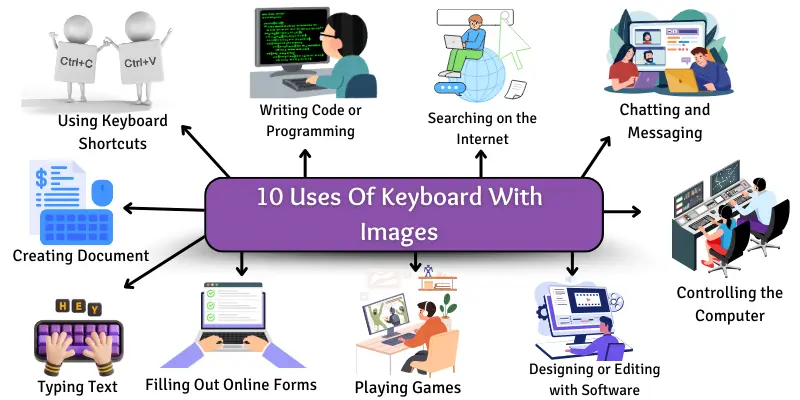
What is the use of keyboard?
A keyboard helps you type on a computer. You can write words, enter numbers, and give commands. It makes using the computer easy and fast.
10 Uses of keyboard
The keyboard is an important part of the computer. It helps us perform many tasks quickly and easily. Below are the 10 common uses of a keyboard.
- Typing text
- Playing games
- Using keyboard shortcuts
- Writing code or programming
- Searching on the internet
- Filling out online forms
- Creating documents
- Chatting and messaging
- Controlling the computer
- Designing or editing with software
Typing text
Typing text is the most common way to use a keyboard to write anything on the computer.
Uses:
- People use the keyboard to type on the computer.
- They write emails to friends and family.
- Students type their homework and assignments.
- Office workers create reports and documents.
- Writers use it to write stories and articles.
- Bloggers type posts using the keyboard.
- Teachers make notes and lesson plans.
- People type search questions on the internet.
- Many users chat by typing messages.
- Everyone uses a keyboard to write something every day.
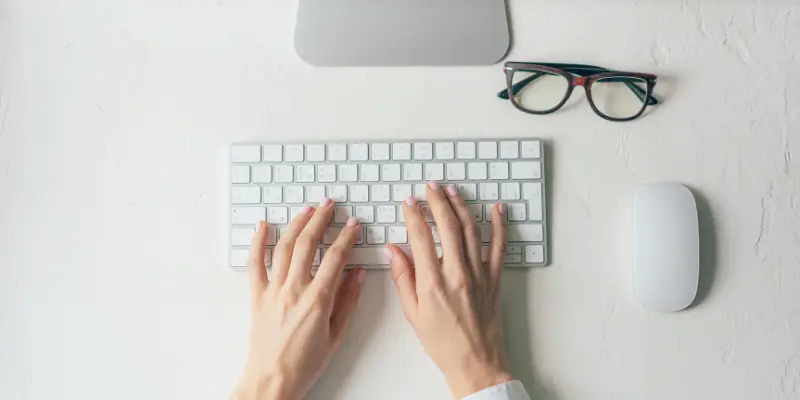
Playing Games
People use the keyboard to enjoy computer games. They press different keys to move characters, perform actions, and explore the game world. Many games require fast reactions and smart control. Using the keyboard makes gameplay smooth and exciting. Gamers feel more involved when they use both hands to play.
Uses:
- Pressing keys helps players control the game.
- Shortcut keys make special moves easier.
- Players open game settings without a mouse.
- Chatting in multiplayer games becomes simple.
- It’s easier to restart or pause the game with key commands.
- Both hands stay active, which improves focus.
- Some games work only with a keyboard.
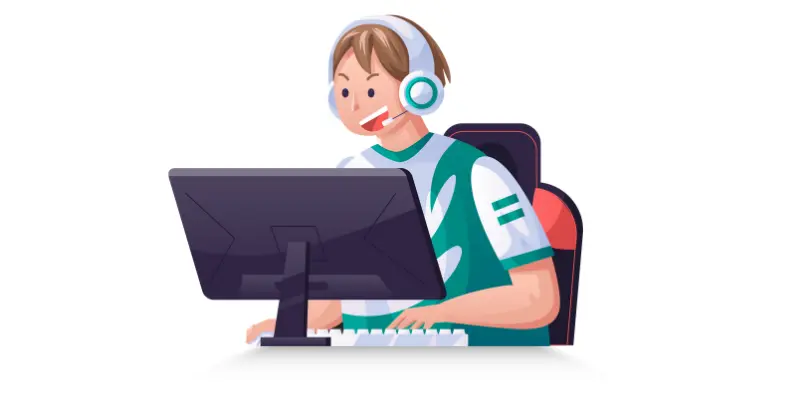
Using Keyboard Shortcuts
People press two or more keys together to do tasks quickly. They open programs, switch tabs, and close windows without using a mouse. They use shortcuts to save time and work faster. Students and office workers press shortcut keys every day to make their work easier and smoother.
Uses:
- People copy and paste text fast.
- They save files quickly.
- They search files in less time.
- They undo or redo mistakes easily.
- They switch between apps fast.
- They reduce hand movement.
- Typists work faster with shortcuts.
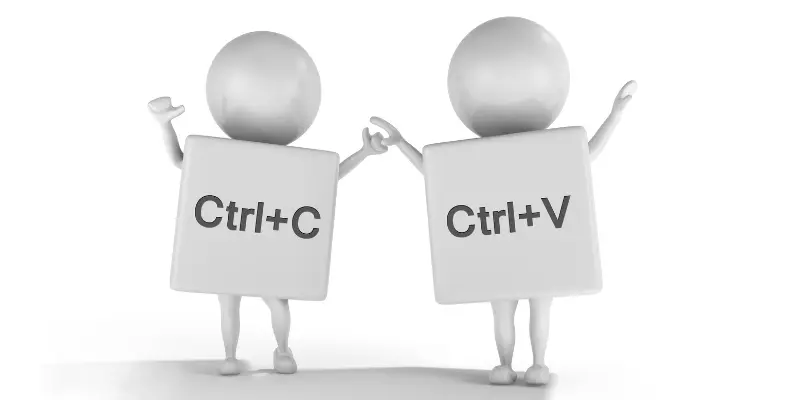
Writing Code or Programming
Programmers use the keyboard to write computer code. They type commands and instructions to create software, websites, and apps. The keyboard helps them write quickly and fix errors easily. Coding needs focus and fast typing. Programmers use many shortcut keys to work faster and avoid mistakes.
Uses:
- Typing code lines clearly and fast.
- Using shortcut keys to save time.
- Fixing errors quickly with keyboard commands.
- Navigating through code without a mouse.
- Running and testing programs with key presses.
- Using a keyboard for debugging code efficiently.

Searching on the Internet
People use the keyboard to find information on the internet. They type words in search engines to get answers quickly. The keyboard helps them write questions, visit websites, and explore many topics. Using the keyboard makes searching faster and easier for everyone.
Uses:
- Typing keywords brings quick results.
- It helps people find news and facts.
- Users visit websites by typing addresses.
- Searching saves time and effort.
- Keyboard shortcuts speed up browsing.
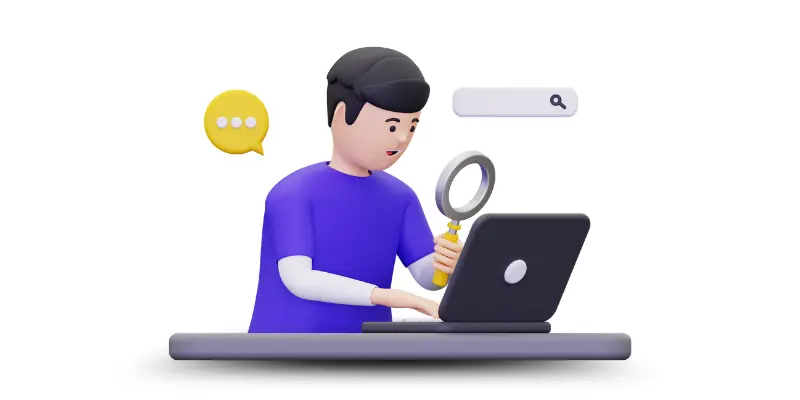
Filling Out Online Forms
People use the keyboard to fill out online forms quickly. They type their names, addresses, and other details carefully, and the keyboard helps them enter information without mistakes. Users press keys to move between form fields and submit their answers. Filling out forms with a keyboard is faster than clicking with a mouse.
Uses:
- Typing makes entering information easy.
- The arrow keys help to move between fields quickly.
- Shortcut keys let users copy and paste data fast.
- The keyboard speeds up filling out long forms.
- Users avoid mouse clicks and save time.
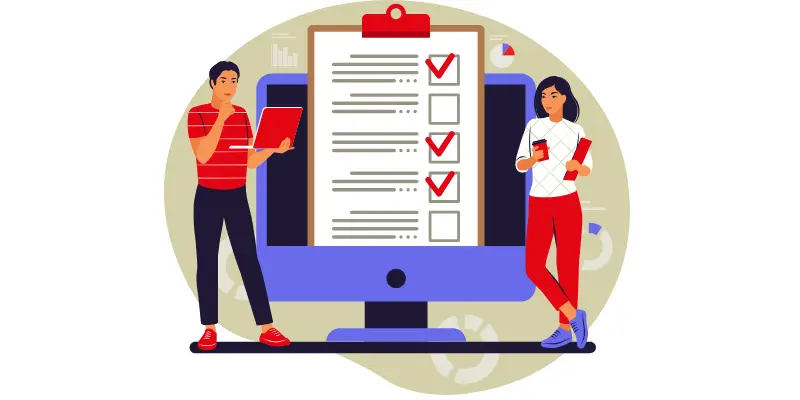
Creating Documents
People use the keyboard to create documents for schoolwork and personal use. They type letters, reports, and notes using typing keys. The keyboard helps them write clearly and quickly. It allows users to format text, add headings, and organize content. Students, teachers, and office workers use it daily to prepare important documents.
Uses:
- Typing keys help write text easily.
- Users add headings and titles with ease.
- Keyboard shortcuts format the text quickly.
Chatting and Messaging
People use the keyboard to send messages and chat online. They type quickly to talk with friends, family, and coworkers. Messaging apps and social media need a keyboard for fast communication. It helps people stay connected and share thoughts anytime.
Uses:
- Sends messages faster than writing by hand.
- It helps with chatting with friends on social media.
- Makes it easy to reply quickly in group chats.
- Allows typing in different languages.
- Perfect for long conversations and formal messages.
Controlling the Computer
People use the keyboard to control many functions on the computer. They open files, run programs, and give commands by pressing keys. The keyboard helps users manage the system without using a mouse. It makes working faster and easier, especially when using shortcut keys.
Uses:
- Users press keys to shut down or restart the computer.
- Shortcut commands help open settings quickly.
- You can switch between open apps using the keyboard.
- The keyboard helps adjust volume and brightness.
- People open the Start menu without clicking.
- It allows quick searching in files and folders.
- Pressing keys can open the Task Manager fast.
- Keyboard commands help fix frozen screens.
Designing or Editing with Software
People use the keyboard while designing or editing on a computer. They press keys to select tools, type text, and use commands. Many software programs, like Photoshop or Illustrator, work faster with keyboard shortcuts.
Uses:
- Shortcut keys speed up the editing process.
- Users select tools without searching menus.
- Designers add text directly using the keyboard.
- Editing becomes faster with simple key presses.
- It’s easy to zoom in or out using the keys.
- The keyboard helps align and move objects.
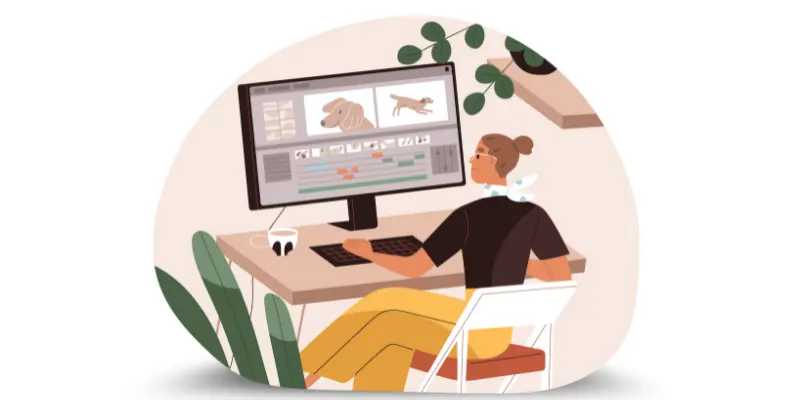
Conclusion
So guys, it’s time to finish up! In this article, we’ve covered 10 uses of keyboard in detail. I personally suggest that you start practicing keyboard shortcuts and simple commands every day. It will make your work faster and easier. If you found this article helpful, please share it with your friends and leave a comment below!
FAQS about the uses of the keyboard
Here are some FAQs about the use of the keyboard
Keyboard shortcuts are special key combinations. They help you do things quickly, like copy and paste. Instead of using the mouse, you press keys to save time.
The keyboard lets you type letters, numbers, and symbols. You can write essays, messages, or homework on the computer. It makes writing neat and fast.
Yes, you can do many things using only the keyboard. There are shortcuts to open files, switch windows, and close programs. It’s helpful when the mouse doesn’t work.
The arrow keys help you move up, down, left, or right. You can scroll pages or move in games. They are useful for reading or editing text.
The keyboard helps you type faster and search for information. You can do school work, practice typing, and use learning apps. It supports both writing and reading skills.
Yes, you can change key settings using special software. This is called remapping. But beginners usually don’t need to do it.
First, check if it’s connected properly. Restart your computer or try another port. If it still doesn’t work, you might need to use a new keyboard.

- Be Respectful
- Stay Relevant
- Stay Positive
- True Feedback
- Encourage Discussion
- Avoid Spamming
- No Fake News
- Don't Copy-Paste
- No Personal Attacks

- Be Respectful
- Stay Relevant
- Stay Positive
- True Feedback
- Encourage Discussion
- Avoid Spamming
- No Fake News
- Don't Copy-Paste
- No Personal Attacks
